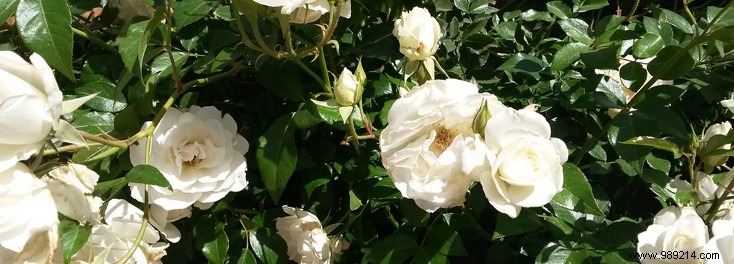
A symbol of grace and beauty, the rose is omnipresent in most gardens. And for good reason, it brings an incomparable decorative touch. However, for it to develop properly and thus sublimate your flower beds, you still need to know how to plant it.
Before you start, first choose the right type of rose. There is a wide variety. Among the most classic are the bush roses which are endowed with very diverse flowers and which have a height of 60 cm to 1.50 m. They are ideal for flowerbeds or for beds.
There are also shrub roses 1 m to 1.80 m high, often with single flowers. This type of rose bush can be used as an isolated subject or for the creation of flowering hedges. Some give it a "ball" pruning by letting the stem rise to create a ball of flowering branches at the top. Guaranteed effect.
If you want to embellish your columns, your arches or your arbors, bet on the climbing roses . Their beautiful and vigorous flowers offer an unparalleled decorative touch.
At the foot of trees, on sloping ground or to create carpets, choose ground cover roses which have the advantage of not needing much maintenance.
In order to promote the development of plants, it is recommended to plant outside the frost period, in other words outside the months from October to April. Autumn is the ideal time, but beware of too wet soil because it is not favorable to the growth of your roses. By choosing autumn, the plants will better adapt to the cold of winter.
A clear and sunny place, these are the ideal conditions for planting your roses. Exposure to heavy rain and high winds is however not recommended.

Places with excessively humid and heavy soil are not recommended. The roots do not like excess water. Especially since the excess humidity can cause the appearance of certain diseases. Well-drained, light soil with no excess limestone or clay is ideal.
Otherwise, good mulching and regular hoeing can prevent the attack of aphids.
Don't forget that the secret of beautiful roses with luxuriant flowering lies in pruning the rose bush, which must be done before vegetation resumes (between January and March), using a precise technique.
Be that as it may, the rosebush is a vigorous and fairly easy plant which adapts rather well almost everywhere:this is also why it is found in all our regions. Of course, some varieties will be more appropriate for harsher climates while others will display all their splendor in the southern regions, but the rose is unanimous. The important thing is the rose, right?!...